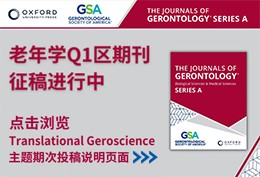-
Skewed demographics Nat. Geosci. (IF 16.1) Pub Date : 2017-09-05
Scientists based in North America and men are overrepresented in our authors' reviewer suggestions.
-
Acts of God, human influence and litigation Nat. Geosci. (IF 16.1) Pub Date : 2017-08-28 Sophie Marjanac, Lindene Patton, James Thornton
Developments in attribution science are improving our ability to detect human influence on extreme weather events. By implication, the legal duties of government, business and others to manage foreseeable harms are broadening, and may lead to more climate change litigation.
-
Cryospheric science: Asia's glacier changes Nat. Geosci. (IF 16.1) Pub Date : 2017-08-07 Daniel Farinotti
Mass changes in High Mountain Asia's glaciers have been under dispute for almost a decade. An analysis of satellite data archives provides an observation-based mass budget for every single glacier in the region.
-
Venus: Jet-setting atmosphere Nat. Geosci. (IF 16.1) Pub Date : 2017-08-28 Alain Hauchecorne
A fast equatorial jet in the Venusian cloud layer has been revealed by the Akatsuki orbiter by tracking cloud movement in near-infrared images. The findings suggest that the Venusian atmosphere is more variable than previously thought.
-
Plate tectonics: Crustal recycling evolution Nat. Geosci. (IF 16.1) Pub Date : 2017-08-21 Valentina Magni
The processes that form and recycle continental crust have changed through time. Numerical models reveal an evolution from extensive recycling on early Earth as the lower crust peeled away, to limited recycling via slab break-off today.
-
Metal availability and the expanding network of microbial metabolisms in the Archaean eon Nat. Geosci. (IF 16.1) Pub Date : 2017-08-28 Eli K. Moore, Benjamin I. Jelen, Donato Giovannelli, Hagai Raanan, Paul G. Falkowski
-
Deep mantle: Enriched carbon source detected Nat. Geosci. (IF 16.1) Pub Date : 2017-08-21 Peter H. Barry
Estimates of carbon in the deep mantle vary by more than an order of magnitude. Coupled volcanic CO2 emission data and magma supply rates reveal a carbon-rich mantle plume source region beneath Hawai'i with 40% more carbon than previous estimates.
-
Tidal controls on river delta morphology Nat. Geosci. (IF 16.1) Pub Date : 2017-07-31 A. J. F. Hoitink, Z. B. Wang, B. Vermeulen, Y. Huismans, K. Kästner
River delta degradation has been caused by extraction of natural resources, sediment retention by reservoirs, and sea-level rise. Despite global concerns about these issues, human activity in the world’s largest deltas intensifies. Harbour development, construction of flood defences, sand mining and land reclamation emerge as key contemporary factors that exert an impact on delta morphology. Tides
-
Equatorial jet in the lower to middle cloud layer of Venus revealed by Akatsuki Nat. Geosci. (IF 16.1) Pub Date : 2017-08-28 Takeshi Horinouchi, Shin-ya Murakami, Takehiko Satoh, Javier Peralta, Kazunori Ogohara, Toru Kouyama, Takeshi Imamura, Hiroki Kashimura, Sanjay S. Limaye, Kevin McGouldrick, Masato Nakamura, Takao M. Sato, Ko-ichiro Sugiyama, Masahiro Takagi, Shigeto Watanabe, Manabu Yamada, Atsushi Yamazaki, Eliot F. Young
The Venusian atmosphere is in a state of superrotation where prevailing westward winds move much faster than the planet’s rotation. Venus is covered with thick clouds that extend from about 45 to 70 km altitude, but thermal radiation emitted from the lower atmosphere and the surface on the planet’s nightside escapes to space at narrow spectral windows of the near-infrared. The radiation can be used
-
Snow precipitation on Mars driven by cloud-induced night-time convection Nat. Geosci. (IF 16.1) Pub Date : 2017-08-21 Aymeric Spiga, David P. Hinson, Jean-Baptiste Madeleine, Thomas Navarro, Ehouarn Millour, François Forget, Franck Montmessin
Although it contains less water vapour than Earth’s atmosphere, the Martian atmosphere hosts clouds. These clouds, composed of water-ice particles, influence the global transport of water vapour and the seasonal variations of ice deposits. However, the influence of water-ice clouds on local weather is unclear: it is thought that Martian clouds are devoid of moist convective motions, and snow precipitation
-
Large sulfur isotope fractionations in Martian sediments at Gale crater Nat. Geosci. (IF 16.1) Pub Date : 2017-08-07 H. B. Franz, A. C. McAdam, D. W. Ming, C. Freissinet, P. R. Mahaffy, D. L. Eldridge, W. W. Fischer, J. P. Grotzinger, C. H. House, J. A. Hurowitz, S. M. McLennan, S. P. Schwenzer, D. T. Vaniman, P. D. Archer Jr, S. K. Atreya, P. G. Conrad, J. W. Dottin III, J. L. Eigenbrode, K. A. Farley, D. P. Glavin, S. S. Johnson, C. A. Knudson, R. V. Morris, R. Navarro-González, A. A. Pavlov, R. Plummer, E. B.
Variability in the sulfur isotopic composition in sediments can reflect atmospheric, geologic and biological processes. Evidence for ancient fluvio-lacustrine environments at Gale crater on Mars and a lack of efficient crustal recycling mechanisms on the planet suggests a surface environment that was once warm enough to allow the presence of liquid water, at least for discrete periods of time, and
-
The strength of the meridional overturning circulation of the stratosphere Nat. Geosci. (IF 16.1) Pub Date : 2017-08-28 Marianna Linz, R. Alan Plumb, Edwin P. Gerber, Florian J. Haenel, Gabriele Stiller, Douglas E. Kinnison, Alison Ming, Jessica L. Neu
The distribution of gases such as ozone and water vapour in the stratosphere—which affect surface climate—is influenced by the meridional overturning of mass in the stratosphere, the Brewer–Dobson circulation. However, observation-based estimates of the global strength of this circulation are difficult to obtain. Here we present two calculations of the mean strength of the meridional overturning of
-
A spatially resolved estimate of High Mountain Asia glacier mass balances from 2000 to 2016 Nat. Geosci. (IF 16.1) Pub Date : 2017-08-07 Fanny Brun, Etienne Berthier, Patrick Wagnon, Andreas Kääb, Désirée Treichler
High Mountain Asia hosts the largest glacier concentration outside the polar regions. These glaciers are important contributors to streamflow in one of the most populated areas of the world. Past studies have used methods that can provide only regionally averaged glacier mass balances to assess the glacier contribution to rivers and sea level rise. Here we compute the mass balance for about 92% of
-
Small fraction of marine cloud condensation nuclei made up of sea spray aerosol Nat. Geosci. (IF 16.1) Pub Date : 2017-08-14 P. K. Quinn, D. J. Coffman, J. E. Johnson, L. M. Upchurch, T. S. Bates
Sea spray aerosols impact Earth’s radiation balance by directly scattering solar radiation. They also act as cloud condensation nuclei, thereby altering cloud properties including reflectivity, lifetime and extent. The influence of sea spray aerosol on cloud properties is thought to be particularly strong over remote ocean regions devoid of continental particles. Yet the contribution of sea spray aerosol
-
Rapid post-seismic landslide evacuation boosted by dynamic river width Nat. Geosci. (IF 16.1) Pub Date : 2017-08-14 Thomas Croissant, Dimitri Lague, Philippe Steer, Philippe Davy
Mass wasting caused by large-magnitude earthquakes chokes mountain rivers with several cubic kilometres of sediment. The timescale and mechanisms by which rivers evacuate small to gigantic landslide deposits are poorly known, but are critical for predicting post-seismic geomorphic hazards, interpreting the signature of earthquakes in sedimentary archives and deciphering the coupling between erosion
-
Fluid-driven metamorphism of the continental crust governed by nanoscale fluid flow Nat. Geosci. (IF 16.1) Pub Date : 2017-08-14 Oliver Plümper, Alexandru Botan, Catharina Los, Yang Liu, Anders Malthe-Sørenssen, Bjørn Jamtveit
The transport of fluids through the Earth’s crust controls the redistribution of elements to form mineral and hydrocarbon deposits, the release and sequestration of greenhouse gases, and facilitates metamorphic reactions that influence lithospheric rheology. In permeable systems with a well-connected porosity, fluid transport is largely driven by fluid pressure gradients. In less permeable rocks, deformation
-
Anatomy of a meltwater drainage system beneath the ancestral East Antarctic ice sheet Nat. Geosci. (IF 16.1) Pub Date : 2017-08-21 Lauren M. Simkins, John B. Anderson, Sarah L. Greenwood, Helge M. Gonnermann, Lindsay O. Prothro, Anna Ruth W. Halberstadt, Leigh A. Stearns, David Pollard, Robert M. DeConto
Subglacial hydrology is critical to understand the behaviour of ice sheets, yet active meltwater drainage beneath contemporary ice sheets is rarely accessible to direct observation. Using geophysical and sedimentological data from the deglaciated western Ross Sea, we identify a palaeo-subglacial hydrological system active beneath an area formerly covered by the East Antarctic ice sheet. A long channel
-
Emergence of silicic continents as the lower crust peels off on a hot plate-tectonic Earth Nat. Geosci. (IF 16.1) Pub Date : 2017-08-21 Priyadarshi Chowdhury, Taras Gerya, Sumit Chakraborty
The rock record and geochemical evidence indicate that continental recycling has been occurring since the early history of the Earth. The stabilization of felsic continents in place of Earth’s early mafic crust about 3.0 to 2.0 billion years ago, perhaps due to the initiation of plate tectonics, implies widespread destruction of mafic crust during this time interval. However, the physical mechanisms
-
Abundant carbon in the mantle beneath Hawai‘i Nat. Geosci. (IF 16.1) Pub Date : 2017-08-21 Kyle R. Anderson, Michael P. Poland
Estimates of carbon concentrations in Earth’s mantle vary over more than an order of magnitude, hindering our ability to understand mantle structure and mineralogy, partial melting, and the carbon cycle. CO2 concentrations in mantle-derived magmas supplying hotspot ocean island volcanoes yield our most direct constraints on mantle carbon, but are extensively modified by degassing during ascent. Here
-
Progress from catastrophe Nat. Geosci. (IF 16.1) Pub Date : 2017-08-01
Natural disasters can devastate local communities. However, these rare events also often trigger new ways of thinking, and provide a treasure trove of data that must be used to reduce vulnerability.
-
Geomorphology: Origins of low-relief plateaus Nat. Geosci. (IF 16.1) Pub Date : 2017-07-10 Annina Margreth
Relatively flat, low-relief plateaus contrast with glacially carved, deep fjords. Computational experiments suggest that these astonishing landscapes are formed exclusively by glaciers.
-
Biogeochemistry: Warmer Arctic weakens vegetation Nat. Geosci. (IF 16.1) Pub Date : 2017-07-10 Ana Bastos
Warm conditions in the Arctic Ocean have been linked to cold mid-latitude winters. Observations and simulations suggest that warm Arctic anomalies lead to a dip in CO2 uptake capacity in North American ecosystems and to low crop productivity.
-
Planetary science: Bypassing the habitable zone Nat. Geosci. (IF 16.1) Pub Date : 2017-07-31 Andrew P. Ingersoll
In our own solar system, Venus is too hot, Mars is too cold and Earth is just right. Simulations show that making an icy planet habitable is not as simple as melting its ice: many icy bodies swing from too cold to too hot, bypassing just right.
-
National baselines for the Sustainable Development Goals assessed in the SDG Index and Dashboards Nat. Geosci. (IF 16.1) Pub Date : 2017-07-17 Guido Schmidt-Traub, Christian Kroll, Katerina Teksoz, David Durand-Delacre, Jeffrey D. Sachs
The Sustainable Development Goals map out a broad spectrum of objectives. Analytical tools in form of the Index and Dashboards provide a starting point to set national baselines, and allow comparison of the SDGs with other indices of well-being.
-
Abrupt climate transition of icy worlds from snowball to moist or runaway greenhouse Nat. Geosci. (IF 16.1) Pub Date : 2017-07-31 Jun Yang, Feng Ding, Ramses M. Ramirez, W. R. Peltier, Yongyun Hu, Yonggang Liu
Ongoing and future space missions aim to identify potentially habitable planets in our Solar System and beyond. Planetary habitability is determined not only by a planet’s current stellar insolation and atmospheric properties, but also by the evolutionary history of its climate. It has been suggested that icy planets and moons become habitable after their initial ice shield melts as their host stars
-
Remote detection of widespread indigenous water in lunar pyroclastic deposits Nat. Geosci. (IF 16.1) Pub Date : 2017-07-24 Ralph E. Milliken, Shuai Li
Laboratory analyses of lunar samples provide a direct means to identify indigenous volatiles and have been used to argue for the presence of Earth-like water content in the lunar interior. Some volatile elements, however, have been interpreted as evidence for a bulk lunar mantle that is dry. Here we demonstrate that, for a number of lunar pyroclastic deposits, near-infrared reflectance spectra acquired
-
Hemispheric climate shifts driven by anthropogenic aerosol–cloud interactions Nat. Geosci. (IF 16.1) Pub Date : 2017-07-17 Eui-Seok Chung, Brian J. Soden
The contrasting rainfall between the wet tropics and the dry subtropics largely determines the climate of the tropical zones. A southward shift of these rain belts has been observed throughout the latter half of the twentieth century, with profound societal consequences. Although such large-scale shifts in rainfall have been linked to interhemispheric temperature gradients from anthropogenic aerosols
-
Reduced North American terrestrial primary productivity linked to anomalous Arctic warming Nat. Geosci. (IF 16.1) Pub Date : 2017-07-10 Jin-Soo Kim, Jong-Seong Kug, Su-Jong Jeong, Deborah N. Huntzinger, Anna M. Michalak, Christopher R. Schwalm, Yaxing Wei, Kevin Schaefer
Warming temperatures in the Northern Hemisphere have enhanced terrestrial productivity. Despite the warming trend, North America has experienced more frequent and more intense cold weather events during winters and springs. These events have been linked to anomalous Arctic warming since 1990, and may affect terrestrial processes. Here we analyse multiple observation data sets and numerical model simulations
-
Microbial substrate preference dictated by energy demand rather than supply Nat. Geosci. (IF 16.1) Pub Date : 2017-07-03 Maximiliano J. Amenabar, Everett L. Shock, Eric E. Roden, John W. Peters, Eric S. Boyd
Growth substrates that maximize energy yield are widely thought to be utilized preferentially by microorganisms. However, observed distributions of microorganisms and their activities often deviate from predictions based solely on thermodynamic considerations of substrate energy supply. Here we present observations of the bioenergetics and growth yields of a metabolically flexible, thermophilic strain
-
Microbial oxidation as a methane sink beneath the West Antarctic Ice Sheet Nat. Geosci. (IF 16.1) Pub Date : 2017-07-31 Alexander B. Michaud, John E. Dore, Amanda M. Achberger, Brent C. Christner, Andrew C. Mitchell, Mark L. Skidmore, Trista J. Vick-Majors, John C. Priscu
Aquatic habitats beneath ice masses contain active microbial ecosystems capable of cycling important greenhouse gases, such as methane (CH4). A large methane reservoir is thought to exist beneath the West Antarctic Ice Sheet, but its quantity, source and ultimate fate are poorly understood. For instance, O2 supplied by basal melting should result in conditions favourable for aerobic methane oxidation
-
High levels of endocrine pollutants in US streams during low flow due to insufficient wastewater dilution Nat. Geosci. (IF 16.1) Pub Date : 2017-07-10 Jacelyn Rice, Paul Westerhoff
Wastewater discharges from publicly owned treatment works are a significant source of endocrine disruptors and other contaminants to the aquatic environment in the US. Although remaining pollutants in wastewater pose environmental risks, treated wastewater is also a primary source of stream flow, which in turn is critical in maintaining many aquatic and riparian wildlife habitats. Here we calculate
-
Formation of plateau landscapes on glaciated continental margins Nat. Geosci. (IF 16.1) Pub Date : 2017-07-10 David L. Egholm, John D. Jansen, Christian F. Brædstrup, Vivi K. Pedersen, Jane L. Andersen, Sofie V. Ugelvig, Nicolaj K. Larsen, Mads F. Knudsen
Low-relief plateaus separated by deeply incised fjords are hallmarks of glaciated, passive continental margins. Spectacular examples fringe the once ice-covered North Atlantic coasts of Greenland, Norway and Canada, but low-relief plateau landscapes also underlie present-day ice sheets in Antarctica and Greenland. Dissected plateaus have long been viewed as the outcome of selective linear erosion by
-
Dynamics and early post-tsunami evolution of floating marine debris near Fukushima Daiichi Nat. Geosci. (IF 16.1) Pub Date : 2017-07-03 John Philip Matthews, Lev Ostrovsky, Yutaka Yoshikawa, Satoru Komori, Hitoshi Tamura
The devastating tsunami triggered by the Tōhoku-Oki earthquake of 11 March 2011 caused a crisis at the Fukushima Daiichi nuclear power station where it overtopped the seawall defences. On retreating, the tsunami carried loose debris and wreckage seaward and marshalled buoyant material into extensive plumes. Widespread concern over the fate of these and numerous other Tōhoku tsunami depositions prompted
-
A reverse energy cascade for crustal magma transport Nat. Geosci. (IF 16.1) Pub Date : 2017-07-10 Leif Karlstrom, Scott R. Paterson, A. Mark Jellinek
Direct constraints on the ascent, storage and eruption of mantle melts come primarily from exhumed, long-frozen intrusions. These structures, relics of a dynamic magma transport network, encode how Earth’s crust grows and differentiates over time. Furthermore, they connect mantle melting to an evolving distribution of surface volcanism. Disentangling magma transport processes from the plutonic record
-
Tsunamigenic structures in a creeping section of the Alaska subduction zone Nat. Geosci. (IF 16.1) Pub Date : 2017-07-24 Anne Bécel, Donna J. Shillington, Matthias Delescluse, Mladen R. Nedimović, Geoffrey A. Abers, Demian M. Saffer, Spahr C. Webb, Katie M. Keranen, Pierre-Henri Roche, Jiyao Li, Harold Kuehn
Segments of subduction zones that are capable of generating tsunamigenic earthquakes appear to have characteristic structural configurations. These structures include heterogeneous plate interfaces, a small wedge of deformed sediment at the toe of the overriding plate (the frontal prism), and splay faults in the crust of the overriding plate that root within the plate boundary megathrust. Here we use
-
Planetary science: Bypassing the habitable zone Nat. Geosci. (IF 16.1) Pub Date : 2017-07-31
In our own solar system, Venus is too hot, Mars is too cold and Earth is just right. Simulations show that making an icy planet habitable is not as simple as melting its ice: many icy bodies swing from too cold to too hot, bypassing just right.
-
Microbial oxidation as a methane sink beneath the West Antarctic Ice Sheet Nat. Geosci. (IF 16.1) Pub Date : 2017-07-31 Alexander B. Michaud, John E. Dore, Amanda M. Achberger, Brent C. Christner, Andrew C. Mitchell, Mark L. Skidmore, Trista J. Vick-Majors, John C. Priscu
Aquatic habitats beneath ice masses contain active microbial ecosystems capable of cycling important greenhouse gases, such as methane (CH4). A large methane reservoir is thought to exist beneath the West Antarctic Ice Sheet, but its quantity, source and ultimate fate are poorly understood. For instance, O2 supplied by basal melting should result in conditions favourable for aerobic methane oxidation
-
Abrupt climate transition of icy worlds from snowball to moist or runaway greenhouse Nat. Geosci. (IF 16.1) Pub Date : 2017-07-31 Jun Yang, Feng Ding, Ramses M. Ramirez, W. R. Peltier, Yongyun Hu, Yonggang Liu
Ongoing and future space missions aim to identify potentially habitable planets in our Solar System and beyond. Planetary habitability is determined not only by a planet’s current stellar insolation and atmospheric properties, but also by the evolutionary history of its climate. It has been suggested that icy planets and moons become habitable after their initial ice shield melts as their host stars
-
Tsunamigenic structures in a creeping section of the Alaska subduction zone Nat. Geosci. (IF 16.1) Pub Date : 2017-07-24 Anne Bécel, Donna J. Shillington, Matthias Delescluse, Mladen R. Nedimović, Geoffrey A. Abers, Demian M. Saffer, Spahr C. Webb, Katie M. Keranen, Pierre-Henri Roche, Jiyao Li, Harold Kuehn
Segments of subduction zones that are capable of generating tsunamigenic earthquakes appear to have characteristic structural configurations. These structures include heterogeneous plate interfaces, a small wedge of deformed sediment at the toe of the overriding plate (the frontal prism), and splay faults in the crust of the overriding plate that root within the plate boundary megathrust. Here we use
-
Remote detection of widespread indigenous water in lunar pyroclastic deposits Nat. Geosci. (IF 16.1) Pub Date : 2017-07-24 Ralph E. Milliken, Shuai Li
Laboratory analyses of lunar samples provide a direct means to identify indigenous volatiles and have been used to argue for the presence of Earth-like water content in the lunar interior. Some volatile elements, however, have been interpreted as evidence for a bulk lunar mantle that is dry. Here we demonstrate that, for a number of lunar pyroclastic deposits, near-infrared reflectance spectra acquired
-
National baselines for the Sustainable Development Goals assessed in the SDG Index and Dashboards Nat. Geosci. (IF 16.1) Pub Date : 2017-07-17
The Sustainable Development Goals map out a broad spectrum of objectives. Analytical tools in form of the Index and Dashboards provide a starting point to set national baselines, and allow comparison of the SDGs with other indices of well-being.
-
Hemispheric climate shifts driven by anthropogenic aerosol–cloud interactions Nat. Geosci. (IF 16.1) Pub Date : 2017-07-17
A southward shift of the tropical rainbelts over the late twentieth century has been attributed. Climate simulations suggest that the mechanism for this influence lies largely with the interaction of aerosols with clouds.
-
Biogeochemistry: Warmer Arctic weakens vegetation Nat. Geosci. (IF 16.1) Pub Date : 2017-07-10 Ana Bastos
Warm conditions in the Arctic Ocean have been linked to cold mid-latitude winters. Observations and simulations suggest that warm Arctic anomalies lead to a dip in CO2 uptake capacity in North American ecosystems and to low crop productivity.
-
Geomorphology: Origins of low-relief plateaus Nat. Geosci. (IF 16.1) Pub Date : 2017-07-10 Annina Margreth
Relatively flat, low-relief plateaus contrast with glacially carved, deep fjords. Computational experiments suggest that these astonishing landscapes are formed exclusively by glaciers.
-
Formation of plateau landscapes on glaciated continental margins Nat. Geosci. (IF 16.1) Pub Date : 2017-07-10 David L. Egholm, John D. Jansen, Christian F. Brædstrup, Vivi K. Pedersen, Jane L. Andersen, Sofie V. Ugelvig, Nicolaj K. Larsen, Mads F. Knudsen
Low-relief plateaus separated by deeply incised fjords are hallmarks of glaciated, passive continental margins. Spectacular examples fringe the once ice-covered North Atlantic coasts of Greenland, Norway and Canada, but low-relief plateau landscapes also underlie present-day ice sheets in Antarctica and Greenland. Dissected plateaus have long been viewed as the outcome of selective linear erosion by
-
A reverse energy cascade for crustal magma transport Nat. Geosci. (IF 16.1) Pub Date : 2017-07-10 Leif Karlstrom, Scott R. Paterson, A. Mark Jellinek
Direct constraints on the ascent, storage and eruption of mantle melts come primarily from exhumed, long-frozen intrusions. These structures, relics of a dynamic magma transport network, encode how Earth’s crust grows and differentiates over time. Furthermore, they connect mantle melting to an evolving distribution of surface volcanism. Disentangling magma transport processes from the plutonic record
-
Reduced North American terrestrial primary productivity linked to anomalous Arctic warming Nat. Geosci. (IF 16.1) Pub Date : 2017-07-10 Jin-Soo Kim, Jong-Seong Kug, Su-Jong Jeong, Deborah N. Huntzinger, Anna M. Michalak, Christopher R. Schwalm, Yaxing Wei, Kevin Schaefer
Warming temperatures in the Northern Hemisphere have enhanced terrestrial productivity. Despite the warming trend, North America has experienced more frequent and more intense cold weather events during winters and springs. These events have been linked to anomalous Arctic warming since 1990, and may affect terrestrial processes. Here we analyse multiple observation data sets and numerical model simulations
-
High levels of endocrine pollutants in US streams during low flow due to insufficient wastewater dilution Nat. Geosci. (IF 16.1) Pub Date : 2017-07-10 Jacelyn Rice, Paul Westerhoff
Wastewater discharges from publicly owned treatment works are a significant source of endocrine disruptors and other contaminants to the aquatic environment in the US. Although remaining pollutants in wastewater pose environmental risks, treated wastewater is also a primary source of stream flow, which in turn is critical in maintaining many aquatic and riparian wildlife habitats. Here we calculate
-
-
For people and planet Nat. Geosci. (IF 16.1) Pub Date : 2017-07-04
The emerging field of geohealth links human well-being and ecosystem health. A deeper understanding of these linkages can help society mitigate the health costs of economic growth before they become crises.
-
Biodiversity loss from deep-sea mining Nat. Geosci. (IF 16.1) Pub Date : 2017-06-26 C. L. Van Dover, J. A. Ardron, E. Escobar, M. Gianni, K. M. Gjerde, A. Jaeckel, D. O. B. Jones, L. A. Levin, H. J. Niner, L. Pendleton, C. R. Smith, T. Thiele, P. J. Turner, L. Watling, P. P. E. Weaver
-
Climate change narratives Nat. Geosci. (IF 16.1) Pub Date : 2017-06-26 Richard D. Pancost
Reconstructions of Earth's past are much more than benchmarks for climate models. They also help us comprehend risk by providing concrete narratives for diverse climates.
-
Aquatic biogeochemistry: Cleaner Chinese lakes Nat. Geosci. (IF 16.1) Pub Date : 2017-06-12 Jessica Corman
Phosphorus loading can cause eutrophication of lakes. Analyses of lake chemistry in China reveal that policies have led to lower phosphorus levels overall, but increasing trends in some lakes suggest that expanded policies may be needed.
-
Climate variability: The Atlantic's internal drum beat Nat. Geosci. (IF 16.1) Pub Date : 2017-05-29 Sloan Coats, Jason E. Smerdon
The North Atlantic region experiences climate variability on a range of timescales. A climate reconstruction suggests that large-magnitude, multidecadal internal variability was a robust feature over the past 1,200 years.
-
The deep atmosphere of Venus and the possible role of density-driven separation of CO2 and N2 Nat. Geosci. (IF 16.1) Pub Date : 2017-06-26 Sebastien Lebonnois, Gerald Schubert
The only temperature profile of the lowermost Venusian atmosphere appears unstable. Compositional heterogeneity due to density-driven separation of N2 from CO2 gas in the lower atmosphere of Venus may be a viable explanation.
-
Causes of differences in model and satellite tropospheric warming rates Nat. Geosci. (IF 16.1) Pub Date : 2017-06-19 Benjamin D. Santer, John C. Fyfe, Giuliana Pallotta, Gregory M. Flato, Gerald A. Meehl, Matthew H. England, Ed Hawkins, Michael E. Mann, Jeffrey F. Painter, Céline Bonfils, Ivana Cvijanovic, Carl Mears, Frank J. Wentz, Stephen Po-Chedley, Qiang Fu, Cheng-Zhi Zou
In the early twenty-first century, satellite-derived tropospheric warming trends were generally smaller than trends estimated from a large multi-model ensemble. Because observations and coupled model simulations do not have the same phasing of natural internal variability, such decadal differences in simulated and observed warming rates invariably occur. Here we analyse global-mean tropospheric temperatures
-
Top-of-atmosphere radiative forcing affected by brown carbon in the upper troposphere Nat. Geosci. (IF 16.1) Pub Date : 2017-05-22 Yuzhong Zhang, Haviland Forrister, Jiumeng Liu, Jack Dibb, Bruce Anderson, Joshua P. Schwarz, Anne E. Perring, Jose L. Jimenez, Pedro Campuzano-Jost, Yuhang Wang, Athanasios Nenes, Rodney J. Weber
Carbonaceous aerosols affect the global radiative balance by absorbing and scattering radiation, which leads to warming or cooling of the atmosphere, respectively. Black carbon is the main light-absorbing component. A portion of the organic aerosol known as brown carbon also absorbs light. The climate sensitivity to absorbing aerosols rapidly increases with altitude, but brown carbon measurements are
-
Transition from high- to low-NOx control of night-time oxidation in the southeastern US Nat. Geosci. (IF 16.1) Pub Date : 2017-06-26 P. M. Edwards, K. C. Aikin, W. P. Dube, J. L. Fry, J. B. Gilman, J. A. de Gouw, M. G. Graus, T. F. Hanisco, J. Holloway, G. Hübler, J. Kaiser, F. N. Keutsch, B. M. Lerner, J. A. Neuman, D. D. Parrish, J. Peischl, I. B. Pollack, A. R. Ravishankara, J. M. Roberts, T. B. Ryerson, M. Trainer, P. R. Veres, G. M. Wolfe, C. Warneke, S. S. Brown
The influence of nitrogen oxides (NOx) on daytime atmospheric oxidation cycles is well known, with clearly defined high- and low-NOx regimes. During the day, oxidation reactions—which contribute to the formation of secondary pollutants such as ozone—are proportional to NOx at low levels, and inversely proportional to NOx at high levels. Night-time oxidation of volatile organic compounds also influences
-
Hotspots of soil N2O emission enhanced through water absorption by plant residue Nat. Geosci. (IF 16.1) Pub Date : 2017-06-05 A. N. Kravchenko, E. R. Toosi, A. K. Guber, N. E. Ostrom, J. Yu, K. Azeem, M. L. Rivers, G. P. Robertson
N2O is a highly potent greenhouse gas and arable soils represent its major anthropogenic source. Field-scale assessments and predictions of soil N2O emission remain uncertain and imprecise due to the episodic and microscale nature of microbial N2O production, most of which occurs within very small discrete soil volumes. Such hotspots of N2O production are often associated with decomposing plant residue
-
Substantial inorganic carbon sink in closed drainage basins globally Nat. Geosci. (IF 16.1) Pub Date : 2017-06-19 Yu Li, Chengqi Zhang, Naiang Wang, Qin Han, Xinzhong Zhang, Yuan Liu, Lingmei Xu, Wangting Ye
Arid and semi-arid ecosystems are increasingly recognized as important carbon storage sites. In these regions, extensive sequestration of dissolved inorganic carbon can occur in the terminal lakes of endorheic basins—basins that do not drain to external bodies of water. However, the global magnitude of this dissolved inorganic carbon sink is uncertain. Here we present isotopic, radiocarbon, and chemical















 京公网安备 11010802027423号
京公网安备 11010802027423号